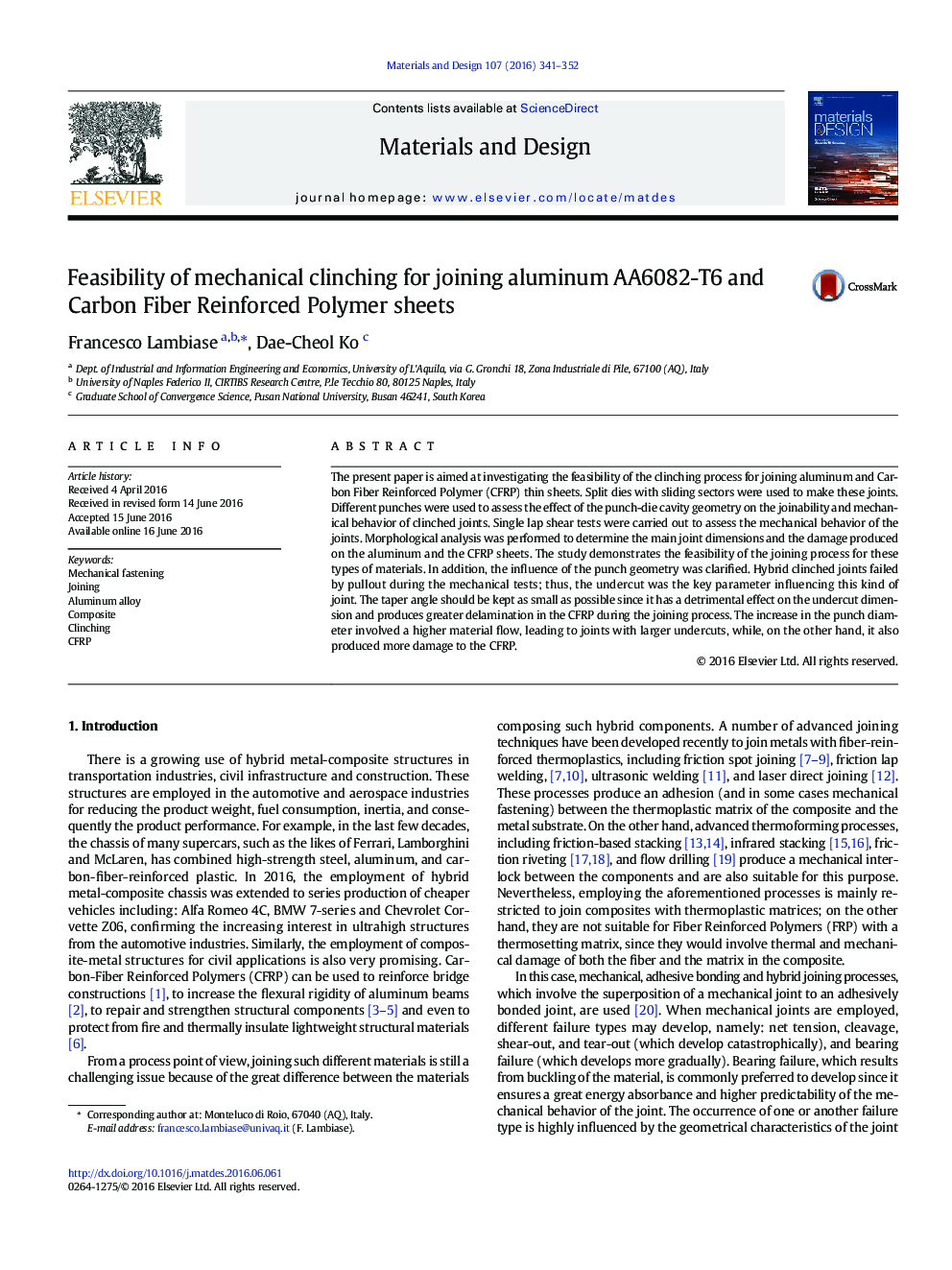| Article ID | Journal | Published Year | Pages | File Type |
|---|---|---|---|---|
| 827786 | Materials & Design | 2016 | 12 Pages |
•Successful joining of aluminum AA6082-T6 and Carbon Fiber Reinforced Polymer (CFRP) sheets by clinching was achieved.•During the joint formation, the largest part of damaged CFRP was expelled from the joint.•The rest of CFRP was compacted by the aluminum bulge leading to the formation of a compressed hole.•The damaged CFRP material surrounding the joint increased with the increase of punch diameter and taper angle.•The highest joint strength reached 2.5 kN, with a bearing strength of 244 MPa which was 66% of that of the CFRP composite.
The present paper is aimed at investigating the feasibility of the clinching process for joining aluminum and Carbon Fiber Reinforced Polymer (CFRP) thin sheets. Split dies with sliding sectors were used to make these joints. Different punches were used to assess the effect of the punch-die cavity geometry on the joinability and mechanical behavior of clinched joints. Single lap shear tests were carried out to assess the mechanical behavior of the joints. Morphological analysis was performed to determine the main joint dimensions and the damage produced on the aluminum and the CFRP sheets. The study demonstrates the feasibility of the joining process for these types of materials. In addition, the influence of the punch geometry was clarified. Hybrid clinched joints failed by pullout during the mechanical tests; thus, the undercut was the key parameter influencing this kind of joint. The taper angle should be kept as small as possible since it has a detrimental effect on the undercut dimension and produces greater delamination in the CFRP during the joining process. The increase in the punch diameter involved a higher material flow, leading to joints with larger undercuts, while, on the other hand, it also produced more damage to the CFRP.
Graphical abstractFigure optionsDownload full-size imageDownload as PowerPoint slide
